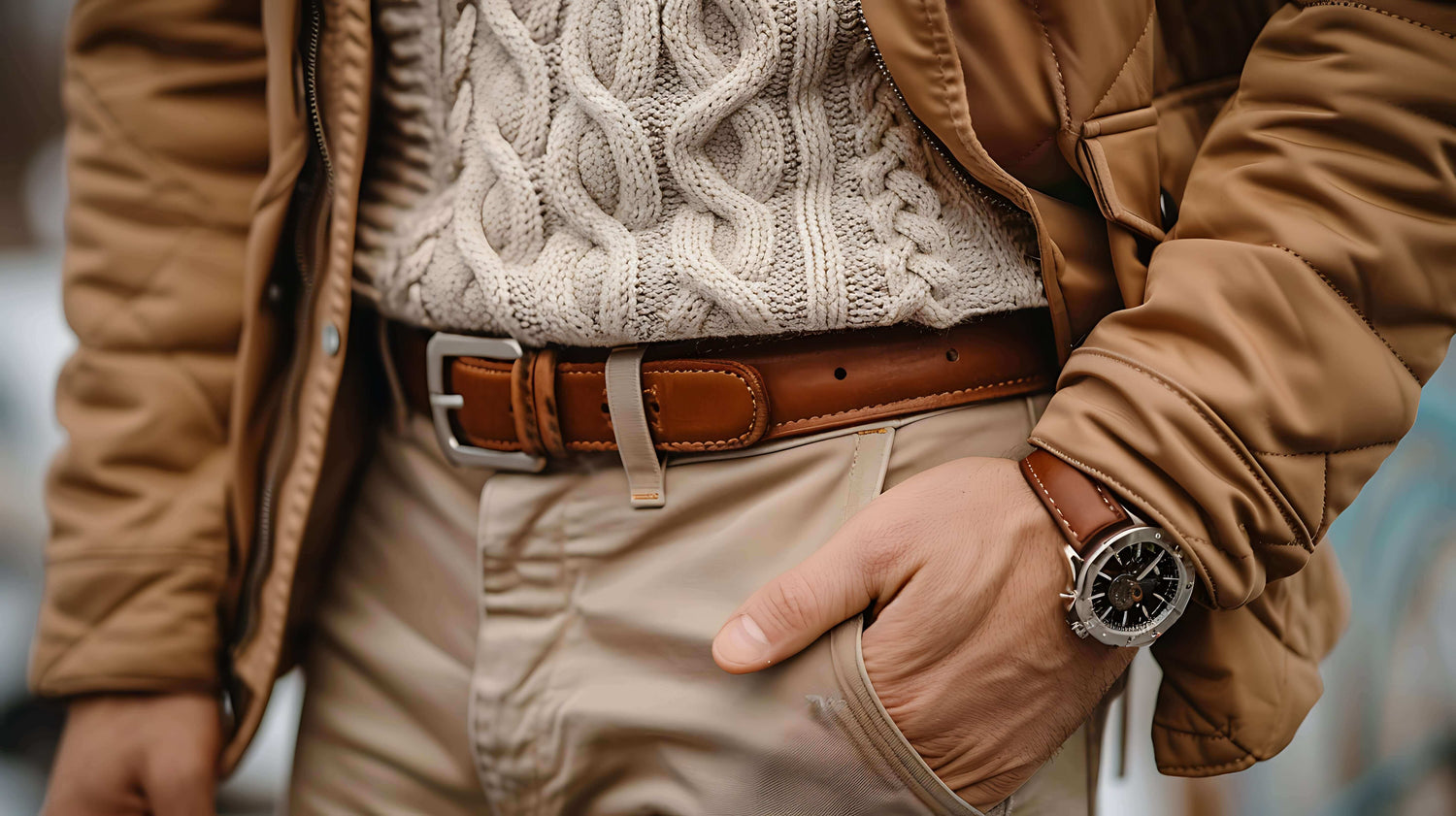In recent years, the "Tactical Belt" is often mentioned in the groups. So what exactly is a "Tactical Belt"? Today, the editor will come to the past and present of tactical belt.
BELT
Speaking of "tactical belts", we must first talk about belts, this creative and smart accessory. It has been with mankind for thousands of years and has now become a must-have item in people's wardrobes, so that we are too accustomed to it, but ignore its unique design wisdom.
According to historical records, the use of belts can be summarized into two types: functional accessories for craftsmen or soldiers to carry tools or weapons, and accessories that symbolize religious honor or nobles as jewelry decorations.
Western cowboys wearing jeans and belts set the tone for American tough guy culture. Their influence on the belt is manifested in the rich belt buckle design-representing heroic performance on the ranch or in competitive performances.
With the evolution of the times, belts have also evolved with different materials, designs and craftsmanship, but what has never changed is that it still inherits the two major demands of functionality and decoration. The concept of "tactical belts" mainly follows the functional demands of belts in wars in the past.
Spring and Autumn & Warring States Warriors
First seen in the Spring and Autumn and Warring States in China and the ancient Greek era in Europe, soldiers wore them to secure armor, and carried swords and bags full of battlefield necessities, including water.
A reenactment of armor and outfits from the ancient Greek period
At this time, the tactical belt is usually fastened with a "Japanese buckle", and at the same time, there will also be a belt on the pants inside the armor. It can be seen that the distinction between the inner belt and the outer belt is ancient.
Military belt in the modern sense
Tactical belts in the modern sense began in the late 19th century. After the Civil War, the US military began to adopt canvas belts. Compared with traditional leather belts, cotton canvas belts are convenient for large-scale standardized production and meet the large-scale equipment needs of the modern army.
Union Army during the Civil War
Today, military and law enforcement agencies around the world generally believe that tactical belts are part of uniforms. This is because wearing tactical belts may actually be more practical and easier to respond to the needs of various tasks than wearing a pair of military pants.
U.S. military attire at the beginning of World War I
There are many types of military belts such as buckle and pin buckle. Common military belts mostly use single-needle or double-needle Japanese-shaped waistband heads, and buckles are used to fix the belt. The U.S. Army has taken a unique approach and developed a brass belt head equipped with a "sliding locking lever". There is a sliding rod inside the belt head that can move in the guide groove on the side of the belt head. The rolling rod will move with the movement of the canvas belt. Roll in the guide groove and tightly lock and fix the waist belt.
U.S. Army brass buckle inner belt
From 1950-1960, Sam Browne Belt (Sam Browne Belt) became popular in the United States. It is characterized by a wide belt tied around the waist, and another thin shoulder strap spanning the torso. Because the inventor, British officer Sam, lost his left hand, he used this design to achieve the purpose of stabilizing the scabbard. This belt was later used to wear heavy firearms.
Sam Browne Belt is popular in the U.S. military
The development of military belts in the late Vietnam War, nylon material was the first to be used by the US military. At that time, the U.S. military's "M1967 lightweight equipment" was famous in the Vietnam War. Nylon material is very suitable for military belts. Compared with leather belts and canvas belts, nylon belts have higher strength, soft feel, excellent wear resistance, waterproof and low temperature resistance, and light weight, which is especially suitable for large-scale standardized production. As a result, this multifunctional nylon belt began to be popularized all over the world.
British armed police in the 19th century
Not only the military, but also in the police field, tactical belts are everywhere, and the police multi-functional belt is also a single police equipment for public security police specified by the Ministry of Public Security.
British police at the scene of the case
The police service belt is used as a carrying system, and its purpose is to solve the carrying and taking of single police equipment.
If we go back to London when the modern police were born, we find that police equipment is at best sticks and whistles. In 1764, truncheons began to be introduced. It was not until 1994 that the British police began to standardize their uniforms nationwide and included the duty belt as a necessary equipment in order to be able to wear batons. Before that, British police usually put their carrying equipment in their handbags or modified pockets.
British policewoman wearing a tactical belt
With the professionalization of the police, the single police equipment has also been improved, and attaching an accessory bag to the duty belt can solve the storage and carrying problems.
Since its development, police service belts have formed a complete system: outer belt, inner belt, belt loop, attached bag, leg hanger (optional), and strap (optional).
Today's tactical belt
With the differentiation of various services and arms in modern warfare, and the emergence of transition methods such as aircraft landing and cable landing, in addition to the core function of wearing carrying equipment, other functions such as rappelling have been developed.
Airborne
The broad concept of tactical belts can be described as functional belts evolved from military police duty belts, including Instructor Tactical Belt, Tactical Riggers Belt, Gun Belt, Duty Belt Belt) and so on.
How to choose a tactical belt
The industry judges the pros and cons of a tactical belt mainly from the following four points:
width
The ideal width of the waistband should be between 4cm and 5cm. This is because the wider the strap, the more it can distribute weight.
hardness
Excellent load-bearing capacity. When a 2-pound or 3-pound weapon is placed in the holster and fixed, it will not sag or curl under the load.
Sturdy
Wear-resistant, durable, tear-resistant material.
Buckle
The fasteners required for different application scenarios are also very different. For example, the tactical rappelling belt, because of its hard texture, has a triangular hanging loop on the side, and a D-ring connected to the rope. Although the type of closure of the buckle is very important, it is basically sturdy and can support the weight of the equipment you are carrying. In addition, easy adjustment and fast disassembly are also necessary.
In short, a good tactical belt has a special transmission belt, no matter what you are doing, you can keep the belt in the correct position.
In addition, to find the right tactical belt, you must consider what kind of tasks you will use it to perform. If you are just looking for a hidden belt, you may not need a lot of extra features. However, tactical operations and field missions are more likely to require D-rings and metal buckles to carry all equipment easily and comfortably.


